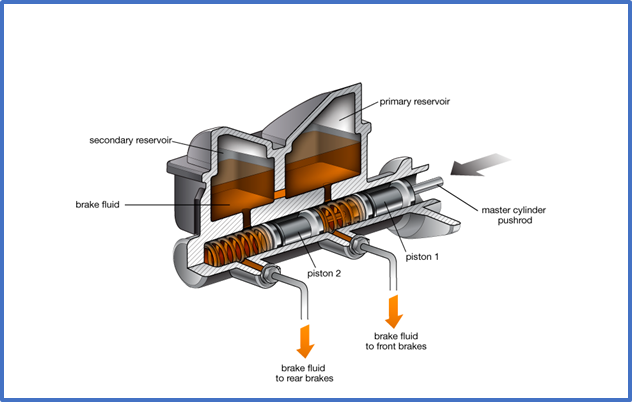
Your Acura’s braking system relies on a key component: the brake master cylinder. This part is essential for converting pedal pressure into hydraulic force, playing a pivotal role in your vehicle's ability to stop effectively. Recognizing the signs and symptoms of a bad master cylinder early can prevent more severe issues and ensure your safety on the road. For replacement parts, visit our Acura OEM parts page.
How a Brake Master Cylinder Works

The brake master cylinder is vital in transforming the pressure applied to the brake pedal into hydraulic pressure. This pressure is sent through brake lines to the calipers, which then press the brake pads against the rotors to halt your Acura. Understanding its function is important for identifying potential problems early.
Common Symptoms of a Failing Brake Master Cylinder
Being aware of the symptoms of a bad master cylinder can save both your brake system and your wallet. Here are the key symptoms and signs to watch for:
Brake Warning Light
The brake warning light on your dashboard is a straightforward indicator often triggered by sensor issues in the brake fluid reservoir attached to the master cylinder.
Brake Fluid Leak
A leak in your brake fluid is a definitive symptom of a bad master cylinder. Inspect for visible puddles under your car and around the wheels and brake calipers after removing the wheels for hidden leaks.
Contaminated Brake Fluid
Black specks or discoloration in your brake fluid can indicate a failing master cylinder due to worn-out seals, risking significant damage to your braking system.
Spongy Brake Pedal
A spongy or unresponsive brake pedal often signifies insufficient hydraulic pressure in the system, a common symptom of a bad master cylinder.
Brake Drag
If your brake pads do not disengage from the rotors, this could be due to mechanical issues within the master cylinder causing a drag, which is a critical sign of failure.
Diagnosing a Damaged Master Cylinder
Recognizing these bad master cylinder symptoms is your first line of defense in maintaining the integrity of your Acura’s brakes. If you notice any of these signs, a detailed inspection or professional consultation is advised to pinpoint the issue and determine necessary actions.
Replacing a Damaged Master Cylinder
If your diagnosis confirms a faulty master cylinder, replacing it promptly is important to prevent further damage to your brake system. Bernardi Parts Acura offers all the OEM parts necessary for any model. Explore our comprehensive parts inventory here.
Monitoring the health of your brake master cylinder is key to ensuring your vehicle’s safety and operational integrity. By recognizing the signs and symptoms of a bad master cylinder early, you can address issues before they escalate into costly repairs.
For more information on maintaining your Acura’s braking system or to find the right OEM parts, please send us a message or call our Acura parts experts at 800-924-1884. To find all the parts you might need, visit Bernardi Parts Acura.
Related Articles